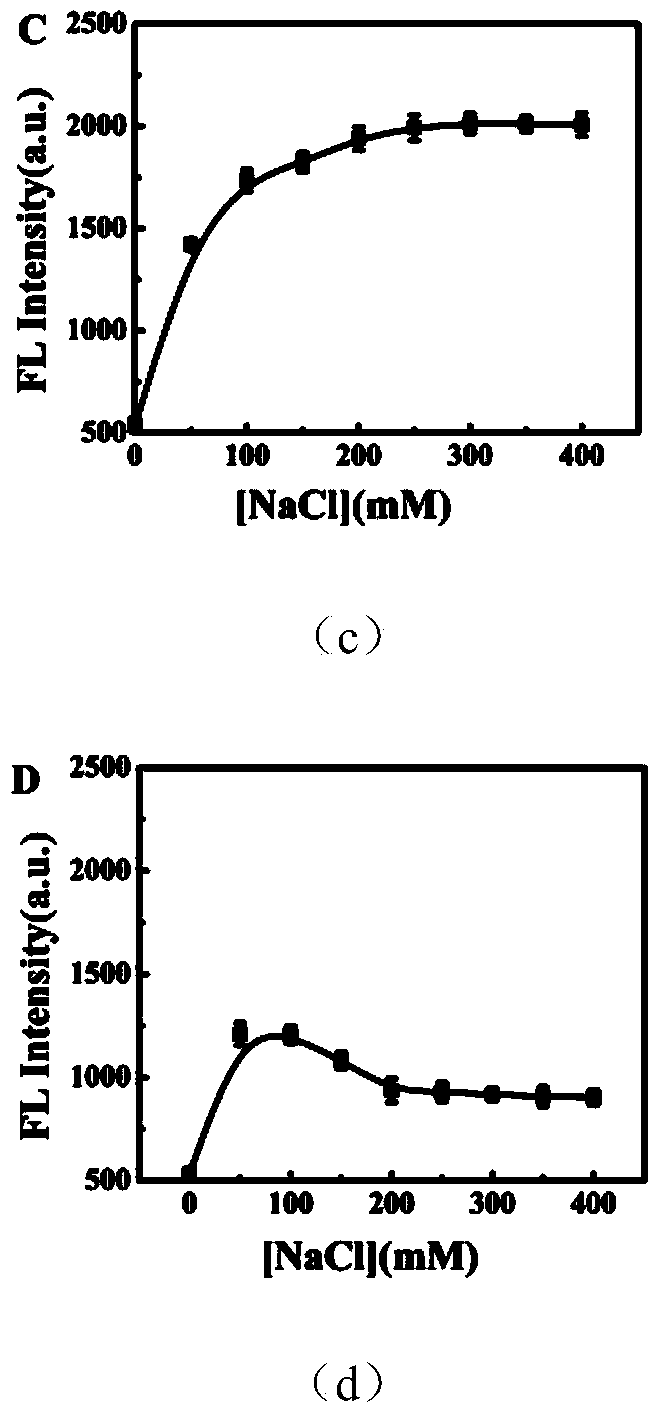Fluorescence sensor, as well as preparation method and application of sensor and method for detecting Heparin molecule
A fluorescent sensor and molecular technology, applied in the field of fluorescent sensors, can solve problems such as thrombocytopenia, and achieve the effect of achieving sensitivity
- Summary
- Abstract
- Description
- Claims
- Application Information
AI Technical Summary
Problems solved by technology
Method used
Image
Examples
Embodiment 1
[0044] The preparation and application steps of the fluorescent sensor based on SG fluorescent dye and unlabeled DNA conformation conversion are as follows:
[0045] a. The DNA sequence to be purchased (A 40 ) was dissolved in 0.05M Tris-HCl (pH7.0) buffer solution and stored at -4°C for future use.
[0046] b. Configure the corresponding concentration for the substances used such as coralyne, heparin, and SG.
[0047] c, in the presence of DNA A 40 Add SG to the buffer solution and incubate the mixed solution in a dry oven at 35°C for 10 minutes; then add the prepared Coralyne solution and continue to incubate in a dry oven at 48°C for 10 minutes to obtain A 40 -A blend of SG-Coralyne.
[0048] d. Put the prepared Heparin solution into the solution containing A 40 -The buffer solution of the SG-Coralyne mixture was incubated in a dry box at 45°C for 10 minutes. Using the electrostatic interaction between Coralyne and Heparin, a sensor based on the conversion of the SG flu...
Embodiment 2
[0051] A method for preparing a fluorescent sensor based on SG fluorescent dye and unlabeled DNA configuration conversion, comprising the following steps:
[0052] (1) DNA sequence: A 40 , dissolved in buffer solution, and preserved for later use;
[0053] (2) Configure the corresponding concentrations for the substances used such as coralyne, heparin, and SG
[0054] (3) in the presence of DNA A 40 Add SG to the buffer solution and cultivate to obtain a mixed solution;
[0055] (4) Add the prepared Coralyne solution to obtain A 40 -A blend of SG-Coralyne. Use A 40 The electrostatic interaction between SG and SG, the sensor based on the conversion of SG fluorescent dye and unlabeled DNA configuration was successfully prepared
[0056] In step (1), the DNA sequence was dissolved in 0.05M Tris-HCl (pH7.0) buffer solution, and stored at -4°C for future use. The solution configured in step (2) is used after step (2) is constant to volume. Step (3) contains DNA A 40 Add SG t...
PUM
 Login to View More
Login to View More Abstract
Description
Claims
Application Information
 Login to View More
Login to View More - R&D
- Intellectual Property
- Life Sciences
- Materials
- Tech Scout
- Unparalleled Data Quality
- Higher Quality Content
- 60% Fewer Hallucinations
Browse by: Latest US Patents, China's latest patents, Technical Efficacy Thesaurus, Application Domain, Technology Topic, Popular Technical Reports.
© 2025 PatSnap. All rights reserved.Legal|Privacy policy|Modern Slavery Act Transparency Statement|Sitemap|About US| Contact US: help@patsnap.com



